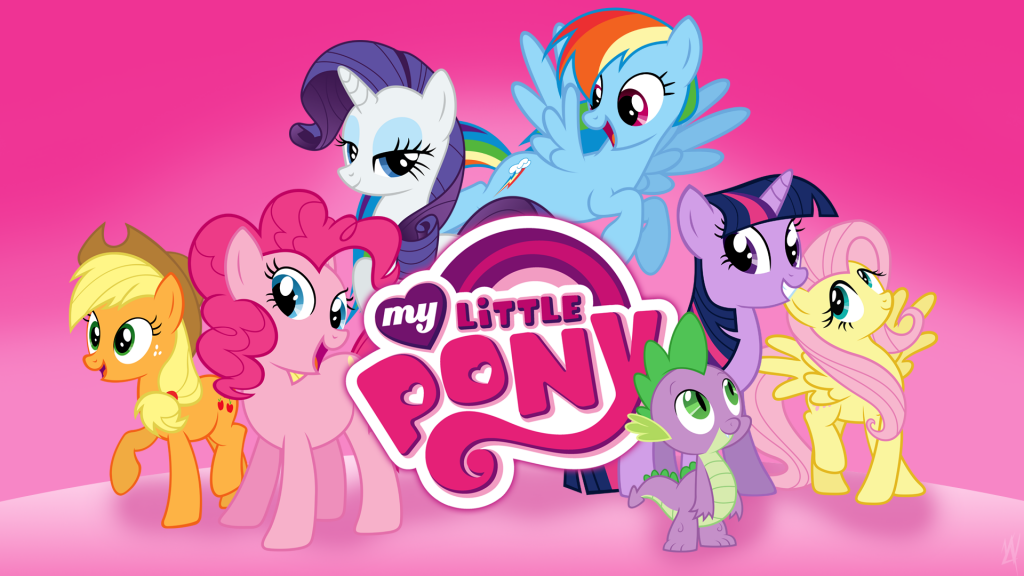 |
| MyLittleVisuals |
If you’re a regular reader of this blog (and a less-than-regular viewer of My Little Pony),
you might have wondered why we’re being so positive about this show.
After all, isn’t it essentially an episodic advertisement for what
amounts to an equine version of the LEGO Friends line? Isn’t Hasbro
feeding girls an unnecessarily pink-ified idea of femininity? Isn’t the
“girliness” of this show the very antithesis of what we want girls to
internalize?
The short answer is no. In my opinion, MLP:FiM
represents the rehabilitation of “girliness.” Twilight Sparkle’s
journey toward royal status is comprised of both the epic,
world-preserving feats typical of masculine narratives and the emotional
development that forms the focus of many traditionally feminine
stories. Indeed, the so-called “girly” stuff is actually what empowers
Twilight to save Equestria. On an episode by episode basis, however, no
one does more to combat the stigmatization of girliness than Fluttershy
and Rarity.
Many
children’s shows that focus on a group of five or six characters assign
them one of a set of familiar roles. Twilight Sparkle is the brainy
scientist, Rainbow Dash the arrogant jock, Applejack the voice of
reason, and Pinkie Pie the comic relief. In most shows, the only role
left would be that of “the girl,” the figure whose primary function is
to dissuade accusations of sexism despite the fact that, while her
teammates contribute to the group by virtue of their varied
personalities and skill sets, she contributes by being not-a-dude. If
each group member is identified by a colour, invariably, hers will be
pink.
My Little Pony features not one, but two “girls” and, in so doing, it completely re-imagines the role.
Fluttershy
Possessed
of heavily accented eyelashes, a pink mane and tail, and a butterfly
Cutie Mark, Fluttershy looks every inch the “girl” of the group. Her
special skill is nurturing animals, and her focus on caretaking makes
her the most overtly maternal member of the Mane Six. She is quiet, shy,
and fearful. She is also, if I may say so, a complete BAMF.
This
is not readily apparent during the bulk of Fluttershy’s screentime. In a
group filled with so many big personalities, Fluttershy’s contributions
tend to get lost. On at least two occasions, she solves a problem
before the others, only to be ignored and spoken over when she tries to
tell her friends. While the other ponies seek adventure, she wants “to
be brave at home, locked in [her] closet with [her] teddy bear.”
This
makes the moments when she can overcome her fear all the more
impressive. When a dragon’s breath threatens to cover Equestria in a
cloud of smoke for a hundred years, the Mane Six climb up to his
mountain lair to convince him to relocate. Fluttershy resists at every
turn, eventually having to be dragged up the mountain by Applejack.
Faced with the imminent confrontation, Fluttershy explains that, though
she adores animals of almost every kind, she is terrified of dragons.
Still, when she sees her friends in danger, she stands up to the beast.
Not only does she stand up to it, she scolds it, saying, “Listen here,
Mister, just because you’re big doesn’t mean you get to be a bully. You
may have huge teeth and sharp scales and snore smoke and breathe fire,
but you do not -- I repeat, you do not
-- hurt my friends! You got that?” While threatening a creature fifty
or so times your size is pretty awesome, what makes this scene is how
Fluttershy concludes her reprimand: “There, there. No need to cry.
You’re not a bad dragon; you just made a bad decision.”
That’s
basically all you need to know about Fluttershy in one scene. She is
terrified, but the moment her friends are in danger, she overcomes her
fears to save them. While a lesser pony would leave it at that, she
manages to look beyond the threat the dragon poses to acknowledge him as
a person and comfort him. Her Element of Harmony is kindness, and an
important aspect of her character is that she is willing to show
kindness to everyone.
The
greatest test of her capacity for kindness comes when Princess Celestia
asks her to begin the rehabilitation of Discord. To fully grasp the
enormity of this challenge, it’s important to know that Discord is the
physical embodiment of the forces of chaos, originally imprisoned by the
princesses Celestia and Luna, who control the passage of day and night
in Equestria, with the help of all six Elements of Harmony. Beating him
isn’t easy. Reforming him seems nigh impossible.
Regardless,
Fluttershy takes on the task. Throughout the episode, she must
withstand peer pressure as her friends argue again and again that
Princess Celestia would understand if they gave up and just imprisoned
him again. She must also cope with Discord abusing her hospitality and
spreading his chaotic influence across Ponyville; indeed, she is made
complicit in his actions when she promises not to use her Element of
Harmony against him. Seeing that she has been used, Fluttershy rescinds
her friendship, making Discord choose between companionship and chaos.
He picks the former, and thereby proves the transformative power of
kindness. If you treat people well, they may choose to become worthy of
your efforts.
On
the other hand, they might not. One of the interesting aspects of
Fluttershy’s character is that, despite her ability to confront dragons,
manticores, and the forces of chaos and emerge victorious, she cannot
seem to extend this success into her everyday life. She can handle the
smallest woodland creatures and the biggest monsters, but other ponies
throw her for a bit of a loop.
The
show takes up this issue in “Putting Your Hoof Down,” an episode that
begins with a timid Fluttershy struggling to stand up for herself in
simple social situations. Already serving as a doormat for her picky pet
rabbit, she gets cheated and pushed around at the local marketplace
because she struggles to assert herself. Fluttershy seeks help from a
minotaur who boils down his assertiveness lessons into easily remembered
catchphrases, and she begins to stand up for herself. Unfortunately,
she goes too far and assertiveness becomes aggression. She begins to
treat other ponies worse than she has treated any monster, and she
becomes frightened of her own capacity for meanness. With the help of
Rarity and Pinkie Pie, she learns that she can be assertive without
being aggressive, and she manages to be firm but kind when she refuses
to pay the minotaur for his teachings.
Having
learned how to overcome monsters, animals, and other ponies, Fluttershy
must face one final opponent: herself. As much fun as it would be to
see a battle between Fluttershy and Nega Fluttershy, this is less a
literal battle than an internal struggle. “Hurricane Fluttershy”
revolves around the Ponyville pegasi having to create a cyclone to
transport water to Cloudsdale. Fluttershy, who has a tendency to forget
that she even has wings, dreads such a public performance; she still
suffers flashbacks to the teasing she endured as a child at flight
school. When it becomes clear that she cannot get out of it, Fluttershy
commits to training her mind and body for the event. Finally, when it
becomes clear that they will fail in their mission unless Fluttershy
steps up, Twilight tells her to “Do it for Equestria! Do it for Rainbow
Dash! Do it for yourself!” With this encouragement, Fluttershy manages
to vanquish the ghosts of past bullies and produce the wing power
necessary to create the cyclone.
Fluttershy’s
Element basically amounts to the power of Heart, so it’s no surprise
that she is one of the more stereotypically “girly” characters on the
show. What is a surprise is just how often this power allows her to step
into the hero’s role and completely own it in her own unique way.
Verdict: Actual strong female character
Rarity
When
I first started watching this show, Rarity was far and away my least
favourite character. This was, in large part, due to her stereotypically
feminine traits. She is a unicorn obsessed with appearances, who often
forgoes practical work in order to beautify her surroundings. She
becomes jealous very easily, and she has a tendency to forget that
relationships are a matter of give and take, not just take and take.
Despite the fact that her Element of Harmony is generosity, she is
remarkably self-centred. For the majority of the first season, I thought
that her best trait was her ability to riff on Sondheim. I have since
been thoroughly disabused of that notion.
One
of the most compelling things about Rarity is the tension that results
when her self-centred focus meets her inherently generous spirit. Unlike
most of the other ponies, who exemplify their Elements in their
everyday lives, Rarity seems to act in direct opposition to her Element.
For example, she makes little time for her sister, Sweetie Belle, and
when she does, the only generosity she displays is in giving lessons and
“reasonable demands.” While other members of the Mane Six embrace their
Elements with ease, Rarity must consolidate the diametrically opposed
attributes of selfishness and selflessness.
In
most cases, the former prevails. In the first episode, the
superlatively vain Rarity sacrifices her tail to complete a sea
serpent’s mustache. On a trip to Canterlot, she rises through the ranks
of high society and, when faced with a choice between friends and
status, she chooses the ponies she loves over the social standing she
craves. In “Suited for Success,” she decides to make gowns for all of
her friends to wear to the Great Galloping Gala, making the ensuing
fashion show and subsequent sales boost secondary to her friends’
satisfaction.
“Suited
for Success” brings up another aspect of Rarity that I find
interesting: her focus on her career. Jobs occupy a weird space in
Equestria, as most of them appear to be a matter of destiny. Doing a job
is not about earning money and experience, but about performing a task
that matches your innate skill set and contributes to the wellbeing of
the town. Applejack was fated to run Sweet Apple Acres, Pinkie Pie was
born to party, and Fluttershy discovered her calling on the ground with
the animals. Twilight Sparkle is basically a professional student, and
her studies are meant to improve her inborn talent for magic. They all
earn money, but only Applejack treats her work as a business, and no one
is as ambitious as Rarity.
Rarity
appears to be the only pony whose business has expanded beyond
Ponyville. The second fashion show in “Suited for Success” draws the
attention of Hoity Toity, a big name in the Canterlot fashion world. He
requests copies of the outfits for his store. In “A Dog and Pony Show,”
the plot’s catalyst comes in the form of pop star Sapphire Shores, who
commissions concert outfits from Rarity. Finally, in “Green Isn’t Your
Colour,” her work is noticed by fashion photographer Photo Finish.
I
have read in the past that Lauren Faust fought for Rarity to be a
fashion designer instead of simply a fan of beautiful clothing. (Any
help locating a link to an article that addresses this would be
appreciated.) It’s an important change; as a fashion plate, she would be
very little more than a mannequin showing off other people’s work, but
as a designer, she plays an active, creative role.
While
I admire both Rarity’s focus on her career and her ability to balance
the duelling sides of her personality, the thing that really made me
like her was, bizarrely, the very thing that initially repelled me: her
girliness. In the aptly titled “A Dog and Pony Show,” a group of
gem-seeking canines abduct Rarity and carry her down to their
underground mine. While she is below ground, we follow her friends, who
have made it their mission to save her.
One
person in particular takes this task very seriously. Spike, who spends
the series nursing a crush on the unicorn, fantasizes about a swooning
Rarity as the quintessential damsel in distress. In his fantasy, he
casts himself in the role of the daring knight sent to save the captured
maiden and win her hand as his prize. Wielding a stalactite as a sword
and riding his trusty steed, Twilight Sparkle, he bursts into Rarity’s
prison only to find her already free. In the time that it took to “save”
her, Rarity has already saved herself.
The
way in which she does this reveals a lot about not only Rarity, but the
performativity of femininity. When the diamond dogs set her to work
locating gemstones, she refuses to dig, claiming concern for her
pedicure. She goes on to request respect from her captors, stating that
she is to be addressed by “Miss.” When the dogs accuse her of whining,
she demonstrates the difference between whining and complaining to prove
just how irritating she can be. Eventually, she refuses to work at all,
on account of one of the dogs calling her a mule, which she
deliberately misconstrues as a slight against her appearance. At every
opportunity, she exaggerates the negative traits of a stereotypical
girly girl, essentially weaponizing girliness.
The
best part of the episode, however, is the moment Rarity reveals that
she has been using the diamond dogs to gather gems for her. As she says,
“Just because I am a lady doesn’t mean I cannot handle myself in a
sticky situation. I had them wrapped around my hoof the entire time.” In
the MLP
universe, a damsel in distress can be a damsel in control. Twilight
Sparkle makes this abundantly clear: “Just because some pony is ladylike
doesn’t make her weak. In fact, by using her wits, a seemingly
defenseless pony can be the one who outsmarts and outshines them all.”
Far from being a weakness, girliness is a potential source of strength.
Like Fluttershy, Rarity employs her own special brand of femininity to perform a unique kind of heroism.
Verdict: Actual strong female character
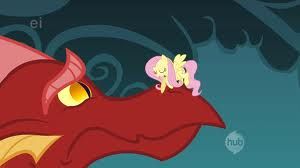
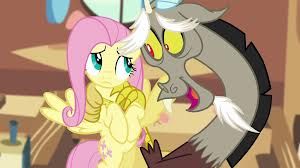
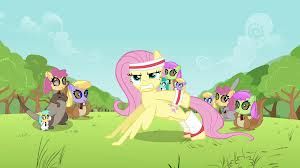


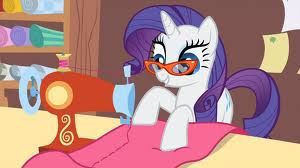

If you're talking 'girly', the real girly girl IS Rarity. Fluttershy is just in between like Pinkie Pie. A girly appearance and shyness don't make a girly girl, so how the hell is Fluttershy a girly girl? Also, Applejack isn't a true tomboy, just a rowdy countrygirl and she even has girly interests. Dash and Fluttershy aren't complete opposites so that doesn't necessarily make Flutter girly. Hence Rarity is the only "girly" one in the bunch.
ReplyDelete